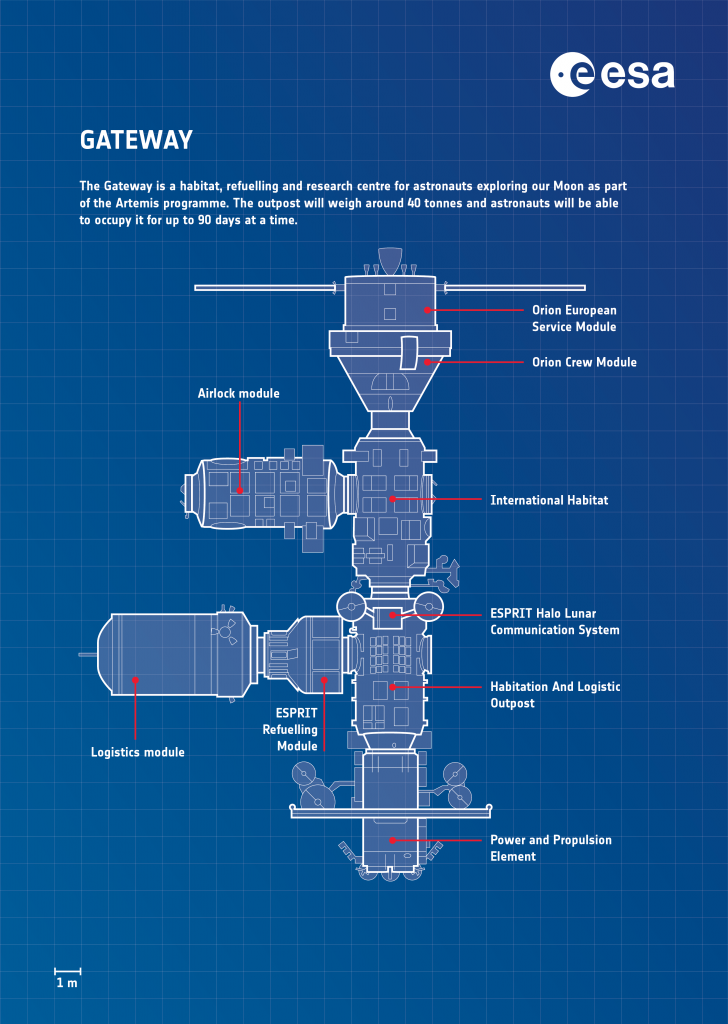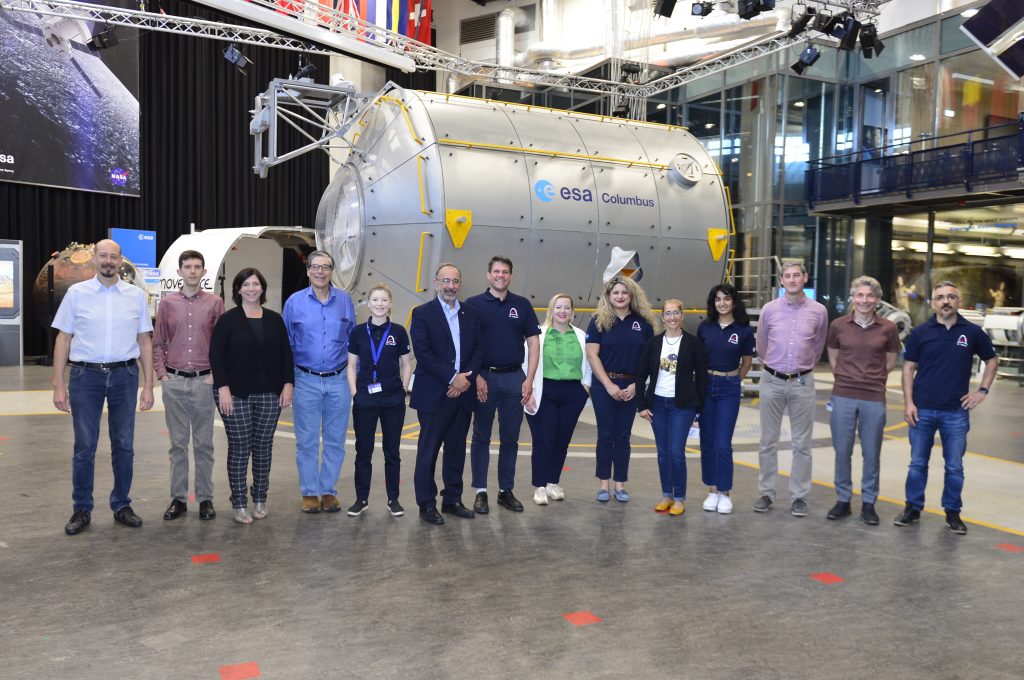The answer is a docking port standard that allows all modules and spacecraft to connect and dock, regardless of who built the hardware.
We caught up with ESA’s Gateway verification, testing, assembly and integration lead Mark Wagner and NASA’s testing and verification leads for Orion, Megan Sip, and Gateway, Bill Othon.
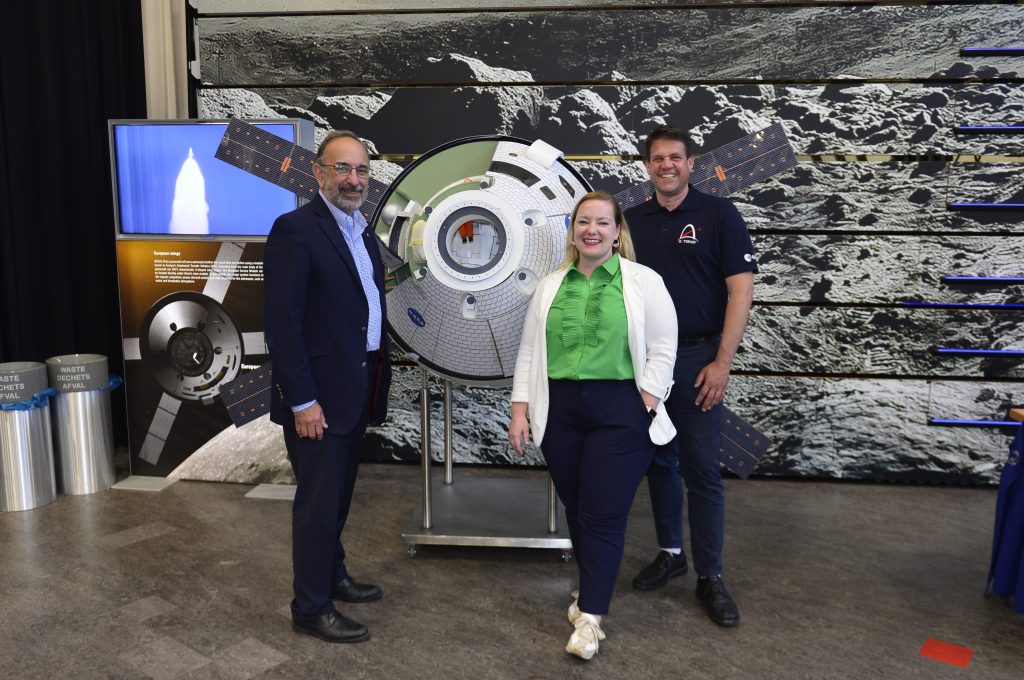
Bill, Megan and Mark in front of an Orion mockup at ESA’s technical heart in The Netherlands. Credits: ESA–A. Conigli
Much like the International Space Station the lunar Gateway will be a modular station that will grow over time as new sections are built and sent to complement the outpost. Unlike the International Space Station, however, Gateway’s ports will be unified to an international docking system standard that was developed in 2010.
The International Space Station used to have two sets of incompatible docking ports, one designed for Russian spacecraft, and another designed for the now-retired Space Shuttle. There also are berthing ports for vessels that cannot dock on their own but are first captured by the Station’s robotic arm, and adapters to accommodate spacecraft such as Cygnus. Adding to the complexity, Russian docking ports have a male and female version, like an electrical plug and socket. This means that a spacecraft can only dock with a vehicle that has the correct receiving port.
The new standard is identical for both craft – any two vehicles can dock or be berthed. And although the connection is defined by the international standard, the mechanism behind the docking ring can be designed in different ways and operational aspects may differ.
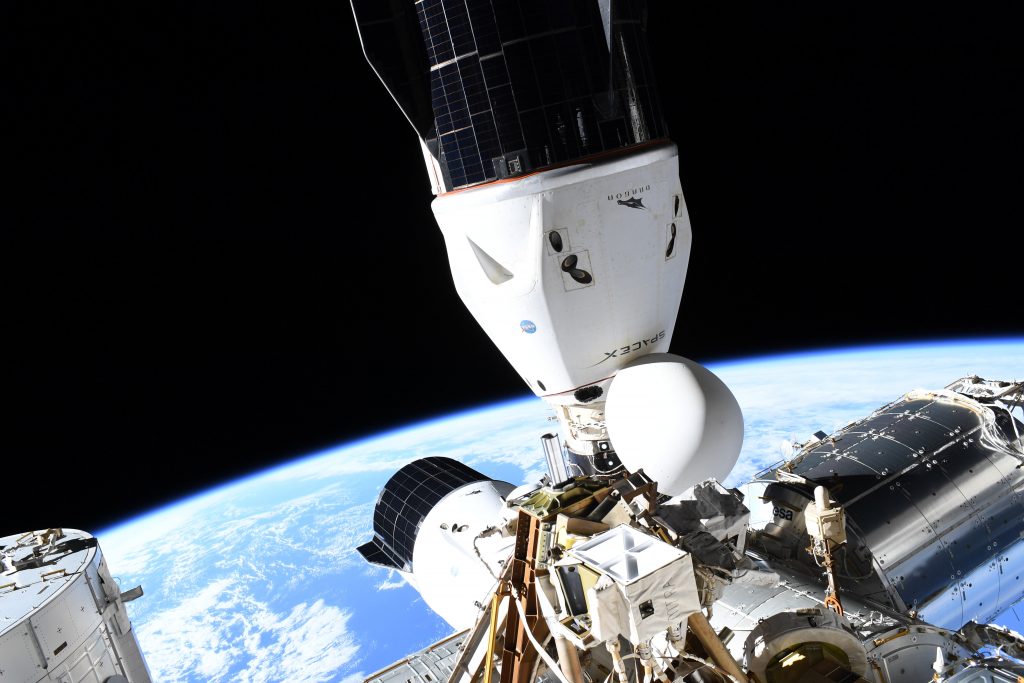
Two Dragon spacecraft in 2021 docked to two of Node-2’s International Docking Mechanisms, NASA’s implementation of the docking standard for the International Space Station. Credits: ESA/NASA–T. Pesquet
“We have a similar problem when we travel to different countries: electrical plugs from the USA don’t fit into European outlets, and we need an adapter to charge our phones when travelling,” explains Megan, “in spaceflight – especially with the Gateway being in orbit around the Moon – we cannot afford last-minute rushes to get our hardware to fit.”
“The docking adapters have to pass through more than just electricity, think power, data, and fluids such as with the European Refuelling Module, that will top up the Gateway tanks with fuel,” adds Bill.
Double docking
I-Hab, is ESA’s first module for the Gateway and will therefore be the first to use the new standard in deep space. The International Berthing and Docking Mechanism, IBDM, is Europe’s version of the standardised port and is being built by Redwire near Antwerpen in Belgium.
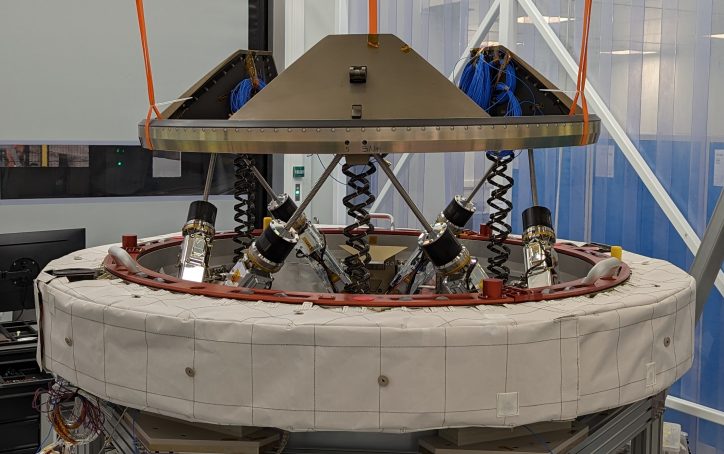
Redwire’s International Berthing and Docking Mechanism. Credit: Redwire
An engineering qualification model of the docking hardware is at ESA’s test centre in ESTEC near Noordwijk, The Netherlands, a good reason for NASA’s Orion and Gateway verification leads, Megan and Bill, to visit ESA’s largest site and discuss the finer points of integrating spacecraft and space stations.
I-Hab will be launched on the Artemis IV mission together with the Orion spacecraft that will tug the module into position around the Moon. The docking ports will be put into action immediately after launch as Orion will detach from NASA’s mega Moon rocket’s second stage, turn around and then dock with I-Hab. I-Hab itself will then detach from the second stage, uncoupling from its launch adapter at the other side as it is pulled away by Orion. The docking port of this side will be used to push I-HAB into NASA’s HALO module on Gateway after its four-day trip to the Moon.
I-Hab has two more docking ports available on its sides for further modules such as an airlock module or visiting vehicles like a deep space logistic module or human landing systems, ESA’s refuelling module will take a docking port on HALO when it arrives at the Gateway on the Artemis V mission.
Understanding gaps
“In all projects the hardest part is communicating well,” says Bill, “it’s good to meet up and talk face to face and negotiate about who does what in this vast international space project.”
“We’re now in the testing phase for the docking rings and what we are doing is finding the best solution to mimick space,” explains Megan, “test like you fly.”
An engineering qualification model of ESA’s International Berthing and Docking Mechanism is being tested at ESTEC’s facilities in the Maxwell chamber, a large Faraday cage and anechoic room that measures and transmits electromagnetic fields to confirm that there will be no interference with other equipment. An engineering qualification model has the same functions, design, and size as the real flight hardware. This test ensures that the hardware will function as intended in the electromagnetic environment throughout its mission.
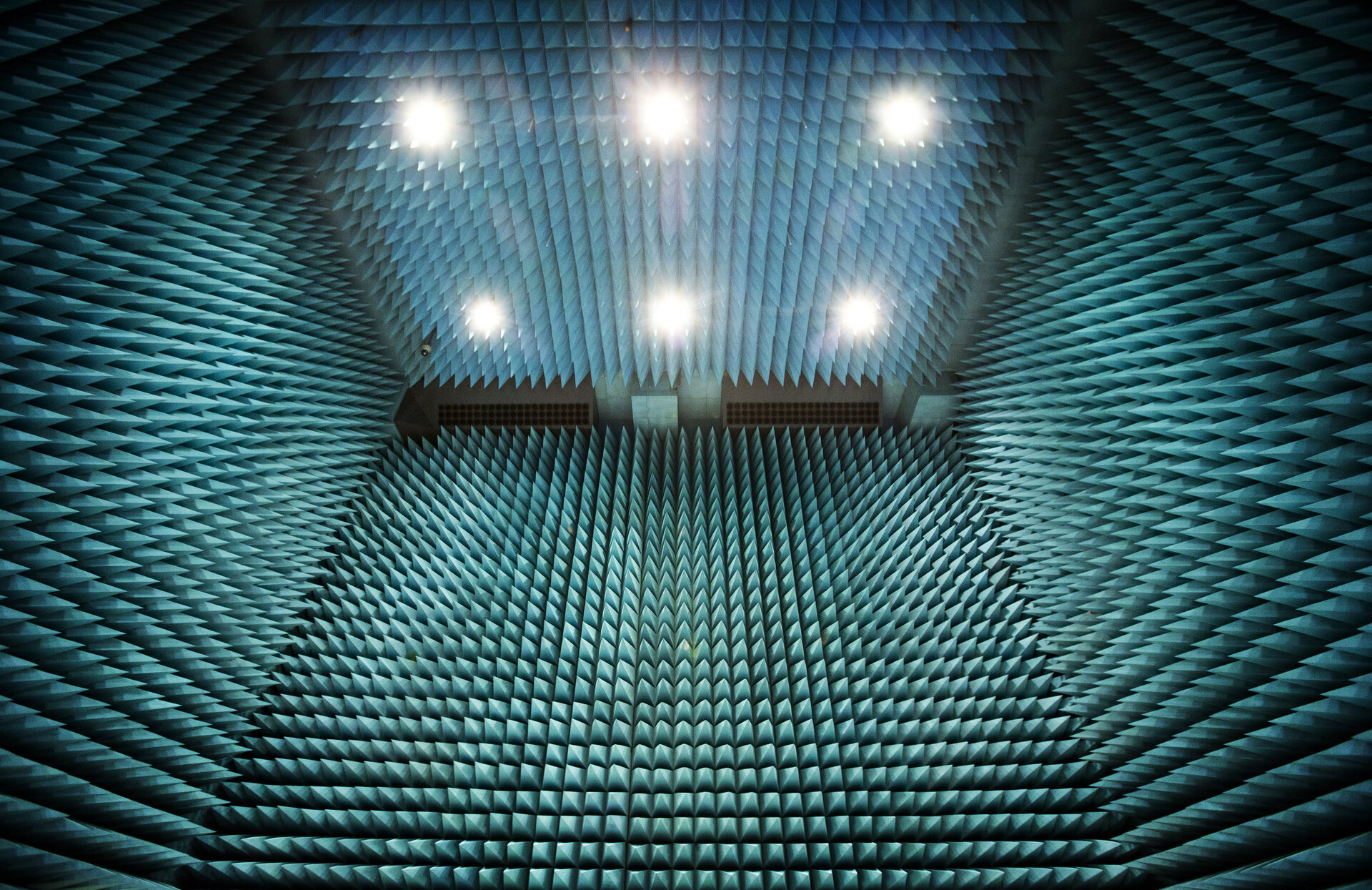
9 m-high spike-lined walls enclose the interior of ESA’s Maxwell test chamber, which isolates satellites from all external influences to assess their electromagnetic compatibility.
“It’s always cool to see the hardware that is going to fly,” says Megan.
“One of the next steps for testing is to plug the hardware into the Matrix,” explains Bill, “we hook up all the different flight software into a server and fool them into thinking they are in space by providing the same inputs they will get in space to see how they react – and if they communicate well between themselves.” “A bit like a big fancy video game,” adds Megan.
“It won’t all be virtual though,” Mark says, “we have a test planned for compatibility where the dissimilar docking rings will run on robotic arms and connect physically.”
“The puzzle for us is that it is not only about physics, but we also need to work out which functions are needed and what to prioritise for the complete product. The first module for Gateway, HALO, will already be in orbit around the Moon when I-HAB is going to be readied for launch and the European refuelling module will be still under production at this point in time, we need to get it right,” says Mark.
“The Gateway is setting an international standard for spaceflight, and we are making it the gold standard,” concludes Bill, “what we are doing here is a demonstration for even farther exploration, for Mars and beyond.”




